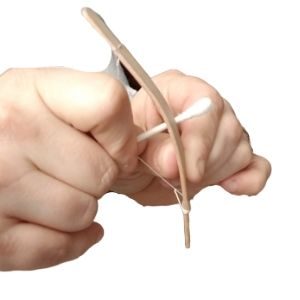The first step to managing staff professional development is to foster an environment of learning. Create an atmosphere where teachers value lifelong learning, develop a need to self-assess and improve one’s knowledge, skills and opportunity. Creating this environment needs to be carefully built into the culture of your program.
What is Professional Development?
Professional development is the process of growing in your career. Often professional development takes the form of classes, workshops or seminars. These are great resources to network, learn and develop your skills, but professional development in child care programs goes much deeper than attending a seminar. This article will layout the most effective ways to grow and help staff grow to their fullest potential professionally.
Why do we need Professional Development in Child Care?
There are two main reasons professional development is important to your career. Firstly, state licensing requires school age professionals acquire a certain number of continuing education hours every year.
In my state of Wisconsin full-time employees are required to obtain 25 hours per year, and part-time staff are expected to get 15 hours of continuing education annually. In addition, we need to keep up on current trends, research, and techniques in child care to grow in our field.
Where to Start managing professional development
As a supervisor you should be aware of staff strengths and weaknesses. You can assess this information in a few ways. The most obvious way is to observe employees at work. You can give them a self-evaluation, and/or if your program has a more formal evaluation process, you can use past evals to determine where employees thrive and where they may need more training.

Then, after you have completed your assessment, share this information with the staff member. This can be done at an annual review or a few times a year to keep everyone on the same track. After you have discussed the evaluation set goals with the staff member. After that, talk about some short- and long-term career goals and keep a written record.
Review these goals annually and re-evaluate progress towards obtaining goals. After setting goals make sure staff understand the requirements to achieving those professional development objectives.
Staff Records and Continuing Education
Maintain a running records of all professional development for every staff member and yourself. Then create a physical folder for each staff member. Create a simple excel sheet (or click here for ours) with an annual running total of courses, credits and hours. Keep this sheet on the top of the file for quick access. Documents that should be included in each folder include:
•Transcripts for credit-bearing courses
•Non-credit certificate of attendance
•Center trainings
•CPR, first aid
•Seminar and conference attendance information
Types of Continuing Education
When it comes to acquiring your continuing education hours you and your staff have many options. One option may be the best fit for one person, but completely wrong for another. Go through the options with staff to help them decide what format is the best choice for them. Below are a few of the most popular options for continuing education.
College
Many people I have worked with through the years have been college students. When college students are employed in childcare and enrolled in an applicable class, their credits will count towards their annual continuing education credits.
University for Post Grad
Already graduated? Any post-graduate courses applicable to the field will also count towards annual requirements.
Credential Courses
Many colleges or universities also offer credential courses. These courses are usually outside of the traditional college structure and are offered night and weekends or online. While these courses require a deeper time commitment you or your staff members will gain more skills and knowledge.
Adult continuing education classes
This can be something as simple as an adult science class that if offered in your community. Check out the area enrichment courses and enroll. But before you register for 25 different enrichment courses, check your state requirements. Many states require a certain number of credits come from certified trainers.
Distance Learning
Find an online course or webinar on a topic you want to learn more about. In today’s world, there are so many options for learning on the internet. Go find one!
Conferences and Seminars
Many local communities and organizations offer conferences and seminars on various topics within the field of school age child care. Face-to-face conferences such as the NAEYC conference (National Associate for the Education of Young Children) or the NAA Convention (National AfterSchool Associate) are a great way to broaden knowledge and skills while networking and diving deeper into developing your career.
Bring Professionals to you
Host an in-house training event. Many agencies offer seminars where the trainers come to you. After you have evaluated your staff, identify areas where everyone could benefit from training and bring someone in to train on the topic.
Utilize our list of 15 ways to grow professionally
Continuing education requirements are the minimum expectations set by the state or other governing agency. If you really want your staff to grow in the field of childcare they need to do more. For instance, you can have staff work on curriculum development or take a STEM class. Check out our list of fifteen ways to improve job performance and set careers off on the right track.
Create a Calendar of Upcoming professional development Events
Create and maintain a professional development calendar. On this calendar list all local and annual state conferences & seminars. Then, as new events come to your attention add them to the calendar. Have staff notify you to what events they would like to attend. This helps staff pre-plan for upcoming events. This also allows you to account for any expenses related to the event.
Pay for Professional Development

Don’t be cheap, help staff pay for professional development! Paying for staff to attend professional development events reduces staff turnover and increase retention. It is smart to allot an annual dollar amount to each staff member’s professional development. If staff attend an event that costs more than the allocated funds available they would then have to cover the difference. When you invest in your staff education, it makes them feel valued while creating a more knowledgeable and well-trained staff.
Utilize Scholarships
The T.E.A.C.H. Scholarship which is available in about 20 states is a great option to look into. T.E.A.C.H.stands for Teacher Education and Compensation Help is a program that provides teachers in non-profit programs an affordable way to attend college. Scholarships are awarded to individuals working in regulated child care programs who are pursuing a credential or degree in early childhood from a two- or four-year institution. If T.E.A.C.H. is not available in your state do research into what scholarships are available for child care professionals and teachers. Then, after you have done your research share the information with staff.



